How Do You Know a Car Is a Gtx
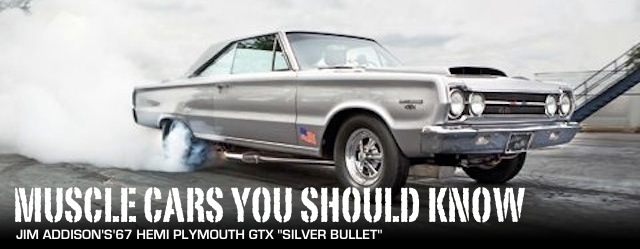
For some Plymouth enthusiasts, the introduction of the 1967 Plymouth Belvedere GTX was a step down in the performance food chain. Yet, in the continuing evolution of the marque's muscle cars, the GTX held its own and led to an fifty-fifty greater competitor in the performance wars of the 1960'south.
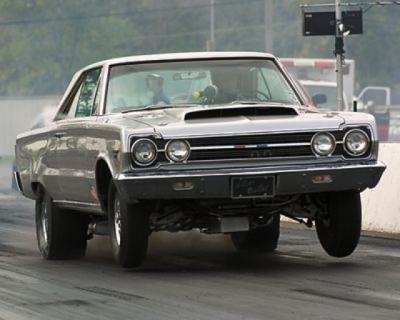
Images: SilverBulletGTX.com
As was the case for most intermediate-sized musculus cars, the cars they were based on were variations on products of modest pretension. First introduced in 1951, the Belvedere was a response to Chevrolet'south successful 1950 Bel Air two-door hardtop. The car enjoyed a great run through the fifties every bit a full size, full line model, including the 1956 introduction of the Fury equally a special, hi-po model.
When downsized in 1962, general sales of the nameplate suffered, simply the same year saw introduction of the big block 426cui V8 engine. The combination of lighter weight and more than ability made the Dais a highly sought-after model for drag racing. The development continued in 1964, when the 426 HEMI engine became available, leading to a 1-2-three stop of the newly-restyled car at the Daytona 500 that yr.
Other than discreet "HEMI" badges, 426-equipped Belvederes were the ultimate stealth automobile on the streets. A decision was made to build a operation image and and so, for the 1967 model year, the Dais GTX was introduced. Available as either a two-door hardtop or convertible, the car came standard with a Super Commando 440cui V8 engine and TorqueFlite 3-speed automatic transmission. To aid manage the additional power, the GTX was built with heavy-duty torsion bars, upgraded 6-leaf rear springs, over-sized anti-sway bars, heavy duty daze absorbers and uprated ball joints.
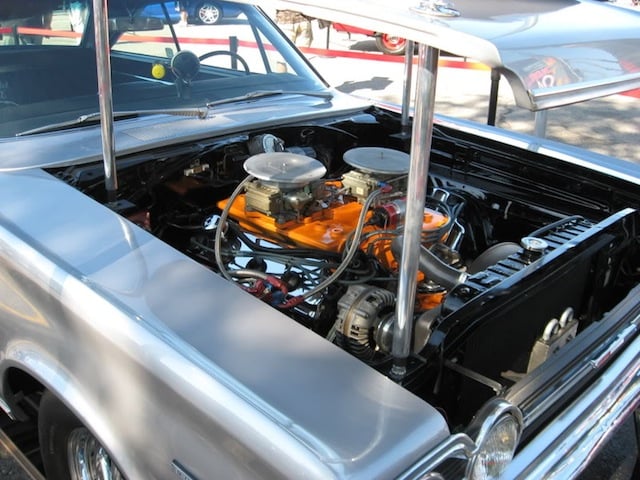
Bigger than the standard 426, Addison's HEMI was punched out to 487 cubes with a 4.25-inch stroker crankshaft, oversized TRW pistons, a Racer Brown cam, a x-quart oil pan and aluminum heads. Topped with twin Holleys, and fed by a Stewart Warner electrical fuel pump, Hooker headers plumbed exhaust to the iv '68 Cadillac mufflers through three-inch pipes.
Promoted as The Gentleman'due south Muscle Auto, the GTX also received a special grille and tail panel, simulated hood scoops, a racing-style chrome gas cap, bucket seats, front end and rear seat belts, and energy-absorbing steering column. Front end disc brakes, and a iv-speed manual manual were optional.
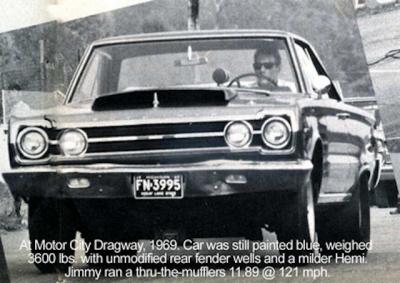
Image: Moparts.com
The 440cui motor get-go appeared in 1966 for full-sized cars with 365 gross horsepower. Chrysler engineers prepared the engine for its debut in a mid-sized car by calculation bigger valves in redesigned heads, along with extra-large throttle bores, a dual snorkel air cleaner, hot cam, over-sized ports and valves and bandage headers. This jumped the output to 375hp.
Option for the 1967 GTX, the 426 "Street HEMI," produced 425hp at 5000rpm and 490 ft-lb of torque at 4000rpm and was offered for a premium of $546 over the base cost of $3,178. Previously, the 426 HEMI was – in theory – optional beyond the line, and many 1966 buyers went for the HEMI in stripped-downwardly bodies. To get the same engine in 1967, the buyer had to pay extra for the GTX trim.
Despite conceding 14cui to the standard engine, the HEMI left it behind, with its l boosted hp – due to the special HEMI heads, higher pinch ratio and dual iv-barrel carburetors. In performance comparisons, the HEMI would win a quarter mile fight. Typical operation for the 440 was 0-threescore in 6.half-dozen seconds and 1/4 mile in 15.two sec at 97mph. For the 426 HEMI, the story was 0-lx in 4.8 seconds, 1/four mile in 13.v seconds at 105mph. However, since the 440's torque peaked earlier and the HEMI had to await until 4000rpm, and was harder to tune, races were ofttimes closely fought and a well-driven, well-tuned 440 automobile could beat a HEMI consistently.
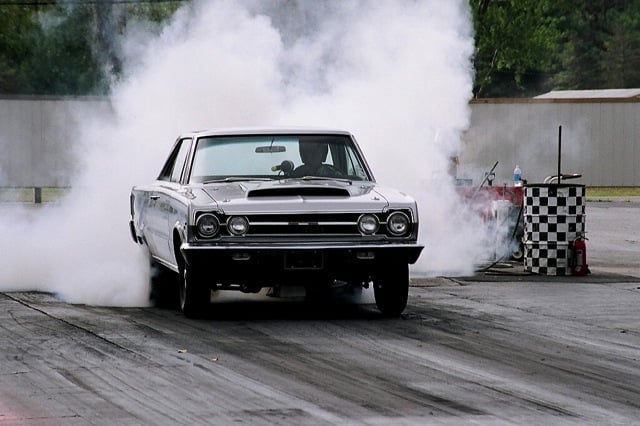
Found and restored dorsum to its as-raced status by electric current-possessor Harold Sullivan, the Silver Bullet is raced today and regularly dips deep into the x-seconds.
Paying the premium for the GTX bundle ultimately resulted in a significant decline in HEMI car sales. In 1966, at that place were one,510 HEMI-powered Belvederes built but, in 1967, that number savage. The easier-to-manage and much cheaper 440 V8 took away a lot of HEMI sales and in doing so made the 1967 Plymouth Belvedere GTX HEMI quite a rare case of the breed.
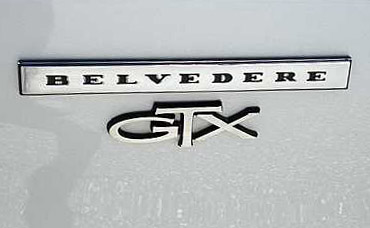 The performance story did not cease there, however. Plymouth had quietly offered in the past, and continued in 1967, an R023 option, that was by and large know of past professional racers only. Oft called the "Super Stock" or lightweight version, this HEMI GTX was improve known past what it didn't have than what it did. A weight saving of several hundred pounds was accomplished by eliminating the radio, heater, body insulation and sealers, carpet, underpad and even the hubcaps.
The performance story did not cease there, however. Plymouth had quietly offered in the past, and continued in 1967, an R023 option, that was by and large know of past professional racers only. Oft called the "Super Stock" or lightweight version, this HEMI GTX was improve known past what it didn't have than what it did. A weight saving of several hundred pounds was accomplished by eliminating the radio, heater, body insulation and sealers, carpet, underpad and even the hubcaps.
A large, functional hood scoop was about the only hint that this wasn't anyone's evidently Belvedere. That hood scoop fed a cold air intake to the hand built HEMI engine, that came with a dual-point benefactor, transistorized ignition, loftier performance ignition wires and dual Carter iv-barrel carburetors. Plymouth built only 55 R023 GTX'south, making them quite rare today.
The existence of the R023 package owes itself – at least in part – to an unassuming mechanic working at Ted Spehar's Sunoco gas station on Woodward Avenue in Birmingham, Michigan. Jimmy Addison was known for his talent with Chrysler products, which was honed into an fine art every bit Addison had complete access to a vast array of exotic racing parts thanks to Spehar who made a decent business of edifice racing engines at his station. Spehar worked with Chrysler at the same time and saw an opportunity with Addison who was actively street racing a 426 Max Wedge '62 Contrivance.
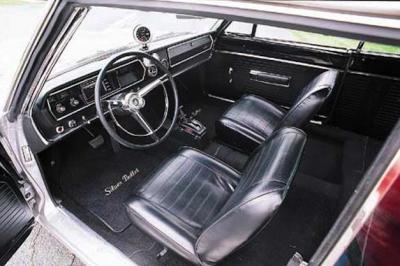
Prototype: Moparts.com
Originally a Chrysler Engineering test mule, the HEMI Belvedere that would go the "Argent Bullet" wasn't a silver HEMI car at all; rather, it was painted blue and equipped with a 375hp 440. Throughout the year, the Plymouth went through several cam, carb, intake, and header combinations for Chrysler's manufactory racing department in Highland Park, Michigan. This "think tank" was helmed by veteran Bob Cahill, and staffed by Tom Hoover (who was instrumental in creating the 426 HEMI) and Dick Maxwell (who was a key member of the legendary Ramchargers racing team).
While street racing was not office of the "official" testing curriculum, stories began to swirl around the Auburn Hills fundamental offices of a pair of older gentlemen candidature a warmed-over Plymouth around the streets of Detroit. Of course, Chrysler wasn't the only one using public roads and America'southward youth as a marketing/examination bed for their street performers. Pontiac, Ford and Chevrolet were all guilty of the aforementioned subterfuge, resulting in a swarm of mill-built GTOs, big block Mustangs and unmarked Chevelles cruising for a petty action.
Through Spehar, the Plymouth was sold to Addison for $i, and nether Chrysler's guidance, the GTX was put on an extreme diet. Supplied with lightweight doors, a hood, window glass, front end crossmember and bucket seats, Addison shaved off 500 pounds whittling the B-Body downward to sub-3600 lbs. In addition to the desperate refitting, the 440 Wedge motor was swapped for a monster 487 cubic-inch HEMI with a 4.25-inch stroker crankshaft, oversize TRW pistons, a steep Racer Brownish camshaft, a 10-quart oil pan and aluminum cylinder heads.
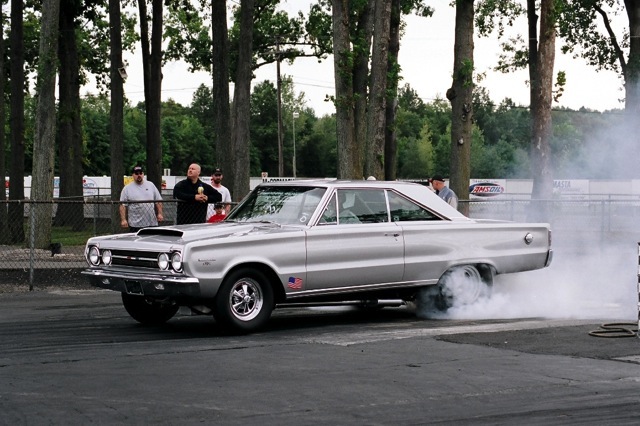
According to SilverBulletGTX.com, "Fuel was delivered to the twin Holley 4-barrel carburetors via a Stewart Warner electric fuel pump, while Hooker headers directed frazzle to the four '68 Cadillac mufflers through 3-inch pipes. Transfer of ability to the M&H drag slicks at the rear was achieved with a modified Torqueflite automated transmission, while compliant front shock absorbers teamed with super stock rear springs to reach the desired rearward weight transfer."
Repainted in bright silver paint, the "Argent Bullet" GTX was born. Even in total trim, the GTX ate up the quarter mile in 10.50 seconds at 132mph, and quickly became one of the almost well-known and feared Mopars prowling Woodward Artery.
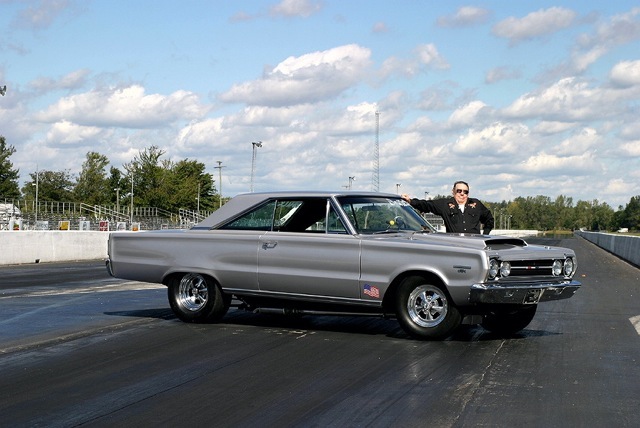
This is believed to be the last time Jimmy Addison was reunited with his famous stroked-HEMI GTX earlier his passing. In addition to existence on display at Mopar events throughout the year, the Silvery Bullet is all the same raced by its current owner Harold Sullivan.
Today, the "Silver Bullet" is owned by Harold Sullivan, a loyal Mopar collector who tracked the 'Bullet down and restored information technology from a long life of difficult knocks. Returned back from the brink of devastation, the original Silver Bullet runs and drives and tin nonetheless light upward the slicks. Even so, since Sullivan wanted to flog the 'Bullet a little harder than he felt comfortable, Sullivan congenital another GTX in the "Argent Bullet II" which he races.
Plymouth muscle machine history would continue to be written long afterward the Silver Bullet, only virtually no other street automobile played so role of that progression.
CHECK OUT OTHER Musculus CARS You SHOULD KNOW
- '71 Baldwin Motion Phase Iii GT
- '63 Chevrolet Z11 Impala 427
- '64 Chrysler Ghia Turbine Auto
- '63 Pontiac Catalina Lightweight 421
- '69 Mercury Cougar BOSS 429
- '69 Royal Bobcat Pontiac GTO Ram Air V
- '87 Buick Regal GNX
- '69 Ford Mustang Boss 302 George Follmer's #sixteen
- '69 Ford Mustang Boss 429
- '69 Dodge Charger Daytona #88
- '69 Motion Chevrolet Camaro Z/28 427 ZLX
- '69 Movement Hurst/Oldsmobile 455
andersenyouripasted1985.blogspot.com
Source: https://www.streetmusclemag.com/news/muscle-cars-you-should-know-67-hemi-plymouth-gtx-silver-bullet/
0 Response to "How Do You Know a Car Is a Gtx"
Post a Comment